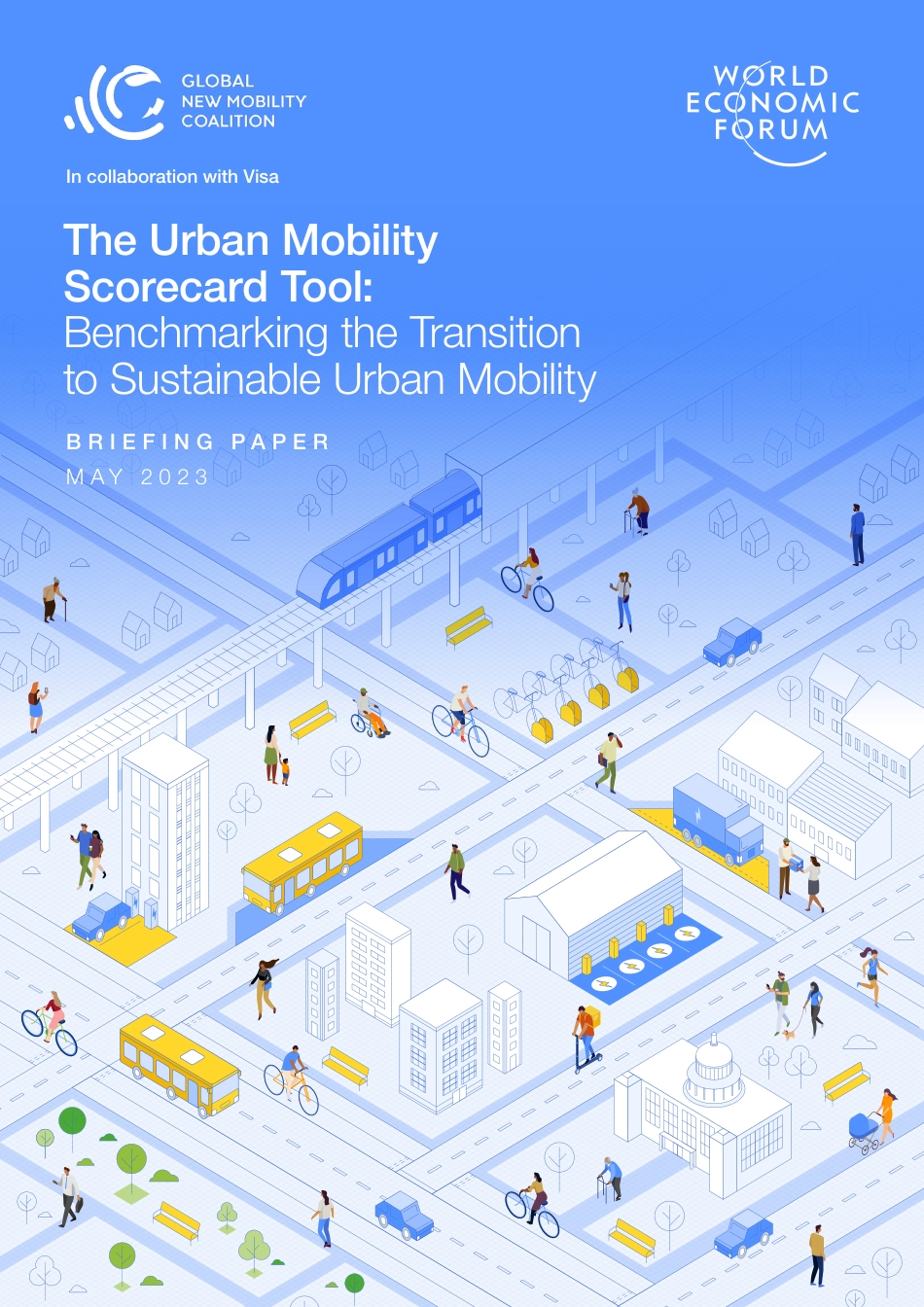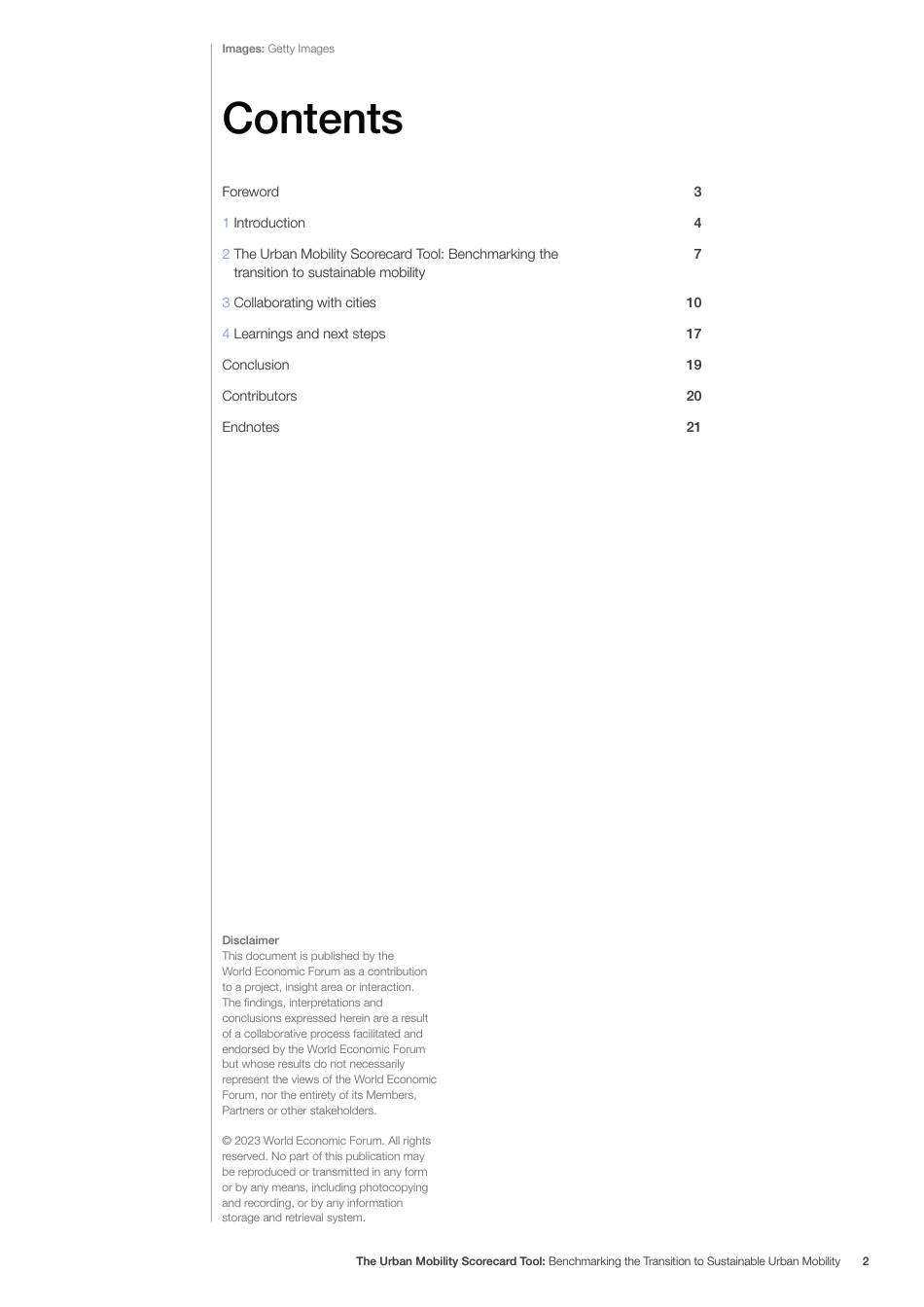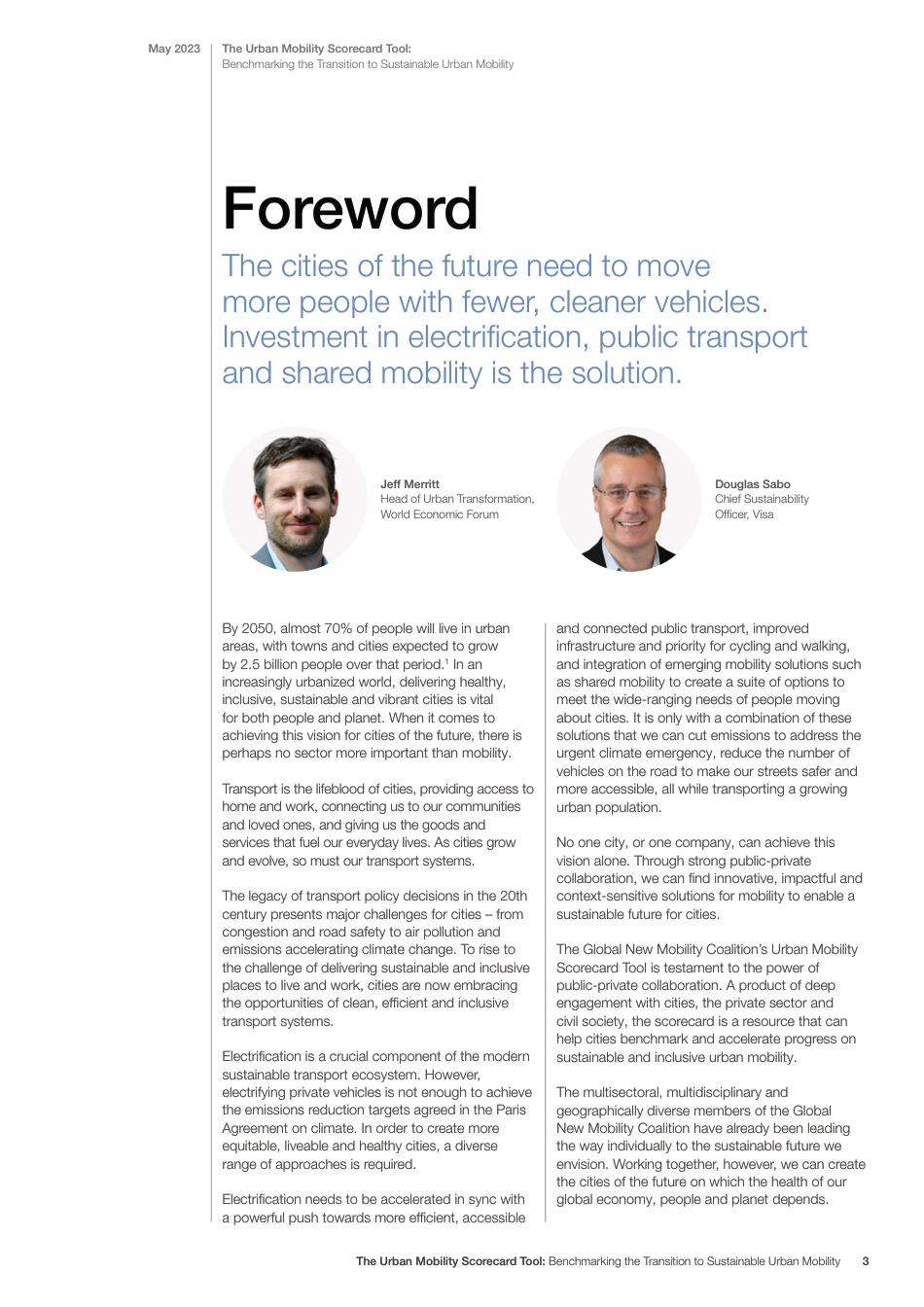The Urban Mobility Scorecard Tool: Benchmarking the Transition to Sustainable Urban MobilityB R I E F I N G P A P E RM A Y 2 0 2 3In collaboration with VisaContentsImages: Getty Images© 2023 World Economic Forum. All rights reserved. No part of this publication may be reproduced or transmitted in any form or by any means, including photocopying and recording, or by any information storage and retrieval system.Disclaimer This document is published by the World Economic Forum as a contribution to a project, insight area or interaction. The findings, interpretations and conclusions expressed herein are a result of a collaborative process facilitated and endorsed by the World Economic Forum but whose results do not necessarily represent the views of the World Economic Forum, nor the entirety of its Members, Partners or other stakeholders.Foreword1 Introduction2 The Urban Mobility Scorecard Tool: Benchmarking the transition to sustainable mobility3 Collaborating with cities4 Learnings and next stepsConclusionContributorsEndnotes347 1017192021The Urban Mobility Scorecard Tool: Benchmarking the Transition to Sustainable Urban Mobility2ForewordBy 2050, almost 70% of people will live in urban areas, with towns and cities expected to grow by 2.5 billion people over that period.1 In an increasingly urbanized world, delivering healthy, inclusive, sustainable and vibrant cities is vital for both people and planet. When it comes to achieving this vision for cities of the future, there is perhaps no sector more important than mobility. Transport is the lifeblood of cities, providing access to home and work, connecting us to our communities and loved ones, and giving us the goods and services that fuel our everyday lives...



